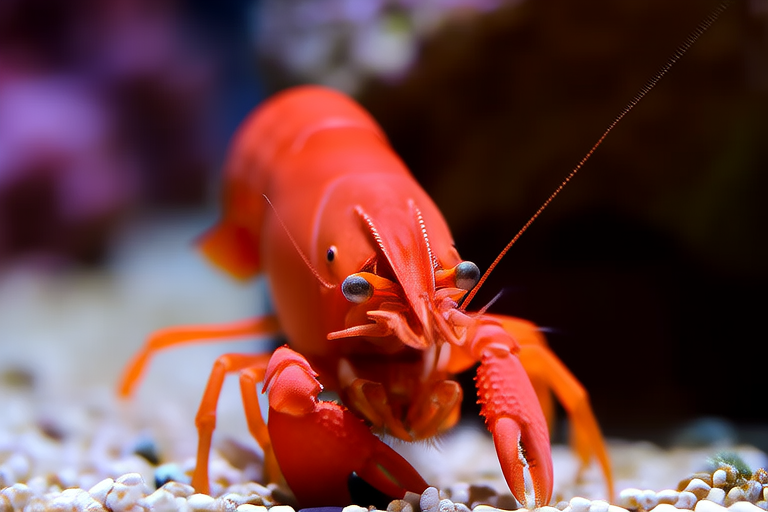Discover the Hidden Secrets Behind Raising Coral Shrimp
Raising coral shrimp can be an incredibly rewarding endeavor for any aquarist, whether you’re a beginner or have years of experience under your belt. These fascinating creatures, known for their vibrant colors and unique behaviors, add a splash of life to any aquarium. This guide will take you through the essential steps of setting up their habitat, maintaining ideal tank conditions, understanding their dietary needs, addressing common health issues, and exploring some lesser-known facts about these captivating crustaceans.
Setting Up Their Habitat
The first step in raising coral shrimp successfully is creating a suitable environment that mimics their natural habitat. Coral shrimp thrive in environments rich with live rock and corals, providing them with ample hiding spots and surfaces for grazing. Live rocks not only enhance water quality by hosting beneficial bacteria but also offer a complex structure where shrimp can explore and feel secure.
Ensure the substrate at the bottom of your tank is fine sand or crushed coral, as this allows for easier burrowing and prevents damage to their delicate bodies. Avoid sharp or jagged substrates that could injure them.
Ideal Tank Conditions
Maintaining optimal water parameters is crucial for the well-being of coral shrimp. They prefer temperatures ranging from 72°F to 82°F (22°C to 28°C), with pH levels between 8.1 and 8.4. Ammonia and nitrite levels should be undetectable, while nitrate levels should remain below 20 ppm. Regular testing and monitoring of these parameters are essential.
Adequate filtration is vital to maintain clean water. Protein skimmers are highly recommended as they help remove dissolved organic compounds that could otherwise harm the shrimp. Additionally, ensure there’s sufficient flow within the tank; a moderate current simulates their natural environment and encourages healthy swimming.
Diet Specifics
Coral shrimp are omnivores, meaning they eat both plant matter and small animals. In the wild, they feed on algae, detritus, and tiny invertebrates. To replicate this diet in captivity, provide a variety of foods such as algae wafers, blanched vegetables like spinach or zucchini, and occasional treats of brine shrimp or daphnia. It’s important to note that overfeeding can lead to poor water quality, so feeding them once every two days is usually sufficient.
One lesser-known fact is that coral shrimp play a crucial role in reef tanks by cleaning algae off rocks and glass, thus contributing to the overall cleanliness of the aquarium ecosystem.
Common Health Issues
Despite their hardiness, coral shrimp can still face certain health challenges. One common issue is molting problems, which occur when the shrimp cannot shed its exoskeleton properly. This may result in trapped limbs or other deformities. Providing a soft surface for molting, such as a sandy area or a dedicated cave lined with soft material, can help prevent this.
Another frequent problem is bacterial infections, often caused by poor water quality or physical injuries. Signs include lethargy, loss of appetite, and visible lesions on the body. Immediate action should be taken if you notice these symptoms; improving water quality and treating with appropriate medications under veterinary guidance is key.
Unique Behaviors
Coral shrimp exhibit several intriguing behaviors that make them delightful additions to any aquarium. For instance, they engage in symbiotic relationships with certain fish species, where both parties benefit from each other. Some fish will even guide the shrimp towards food sources, while the shrimp cleans parasites off the fish.
Another fascinating behavior is their ability to change color depending on their mood or surroundings. When stressed, they might turn pale or display darker hues. Understanding these signals can help you gauge their comfort level in your tank.
Lesser-Known Facts
Did you know that coral shrimp are capable of regenerating lost appendages? If they lose a limb during a fight or due to injury, they can regrow it over time. This remarkable adaptation showcases their resilience and adaptability.
Additionally, coral shrimp have a complex social hierarchy within groups. Dominant individuals often assert themselves through aggressive displays or territorial behavior, whereas subordinate shrimp tend to stay hidden or submissive. Observing these interactions can provide valuable insights into their social dynamics.
Conclusion
Raising coral shrimp offers not only aesthetic appeal but also educational value. By understanding their specific requirements and unique characteristics, you can create a thriving environment that supports their growth and happiness. Whether you’re new to shrimp keeping or looking to deepen your knowledge, this guide provides essential information to ensure success in raising these beautiful creatures.
